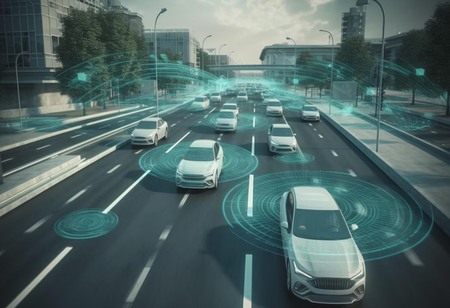
The Hyundai Motor Group Innovation Centre in Singapore (HMGICS) is a micro-factory in the city-state of Singapore. Instead of the vast manufacturing of a standard car factory, urban micro-factories are distinguished by a multi-vehicle, low-volume production method. Despite its modest vehicle industry, Singapore is seen as a viable testbed for the implementation of innovative technologies in the future mobility period.
According to Hyundai Motor Group, the HMGICS, which debuted on November 21, is a seven-story facility the size of six soccer fields in western Singapore's Jurong Innovation District.
The HMGICS is a low-volume, multi-vehicle production system with an intelligent, automated manufacturing platform. Instead of conveyor belts, the company produces numerous car models using a cell system. This will enable Hyundai Motor Group to build 50,000 vehicles per year while also serving as a trial ground for new technologies. If the Ulsan EV factory, which recently broke ground, is a future production base, the HMGICS is an innovation hub. According to Hyundai Motor Group, the two plants will serve as the foundation for the next 50 years of electrification.
Because of its location, Hyundai Motor Group chose Singapore for its innovation center. The Jurong Innovation District, where HMGICS is located, is a high-tech industrial park that is pushing a digital revolution as part of the Singapore government's economic reform agenda launched in 2016. Jurong Industrial Park, long renowned as Asia's manufacturing heartland, has been revived as a future industrial park as a result of Singapore's pro-business policies.
Singapore had approximately 650,000 registered automobiles as of 2021. Due to the exorbitant expense of a Certificate of Operation (COE), just 10% of the population owns an automobile. There is no rationale for Hyundai Motor Group to develop a production unit there based just on the size of the market. However, despite its tiny market size, Singapore has enormous economic power. It is a Southeast Asian logistics, financial, and business hub with a significant interest in innovative services and technologies. It is thought to be an ideal place for a testbed for emerging technology.
Hyundai Motor Group is aware of this fact. "Factors such as open and forward-looking government policies, a stable business and economic environment, and strong and abundant human resources are suitable for the purposes and infrastructure of HMGICS," according to an official from Hyundai Motor Group. "We built HMGICS in Singapore in line with Hyundai Motor Group's vision to realise a future mobility innovation hub through the convergence of people and technology."
With HMGICS, Hyundai Motor Group intends to boost its brand's competitiveness in the Southeast Asian market. As a result, HMGICS will not only manufacture automobiles, but will also deliver them to clients. The idea is to boost sales by strengthening brand power in an area dominated by Japanese automakers like Toyota and Honda. In 2022, Hyundai and Kia sold a total of 198,000 automobiles in Southeast Asia. Their primary manufacturing sites are in Indonesia and Vietnam. Hyundai Motor Group recently created a subsidiary in Thailand in order to expand its presence in the region.

